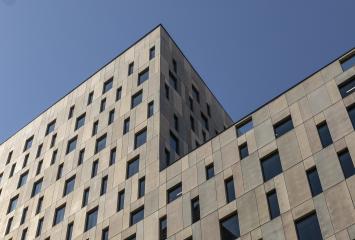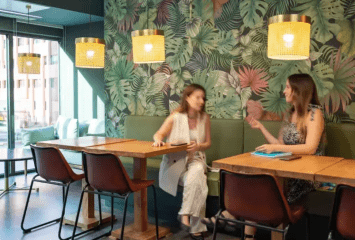How to promote sustainable mobility through building construction
Modern companies have many motivations to pursue sustainability: an improvement in their brand image, greater attractiveness for professional talent, economic savings in resource management, and access to new emerging markets. The office plays a very important role in this. After all, a company could not truly declare itself eco-friendly if it operates from an inefficient and polluting office that is unaware of environmental vulnerability. But it's not just the destination that matters: also the way workers get to the office. And the building itself can significantly influence this. Let’s see how.
Strategic location
Probably the most influential construction decision in promoting sustainable mobility. After all, buildings located in prime environments, such as those found in Colonial's asset portfolio, have better public transport connections. This makes it easier for workers to choose more sustainable means like electric bikes, buses, or the subway instead of private cars. Additionally, a central location also reduces travel distances and thus resource consumption.
Internal services
Public transportation is a very interesting alternative for sustainable mobility. But obviously, it is not the only one: many people would consider acquiring private electric cars, private electric scooters, or private electric bikes if they had the necessary facilities in their company's office building. Among the most important are electric charging points and parking services, and, to a lesser extent, showers for those who wish to come to the office practicing running or classic biking.
Green and pedestrian spaces
The presence of vegetation both inside and around the office provides many individual benefits to employees and, consequently, many benefits to companies: reduced stress levels, emotional well-being, a sense of connection with nature, or breathing better quality air. But it also influences sustainable mobility. After all, employees enjoy walking, scootering, or biking more when they travel through pleasant, beautiful, and accessible environments for all people.
Parking areas
There is another notable alternative for sustainable mobility beyond those mentioned so far: carpooling, a practice where several people use the same car to travel. Ideal when numerous workers live relatively close to each other and can save economic resources and reduce the environmental impact needed to get to the office. In this sense, the existence of spacious and quality parking areas in the office building greatly facilitates the adoption of this practice.
Flexibility resources
Hybrid work is a rising labor model. Thus, many companies seek the advantages of prime offices but with the services of flex spaces: open spaces for free interaction, digital technologies spread throughout different environments, or meeting rooms equipped with videoconferencing technology to promote employees working from home some days of the week. Resources that reduce office dependency and allow commutes to the office to be reduced.

